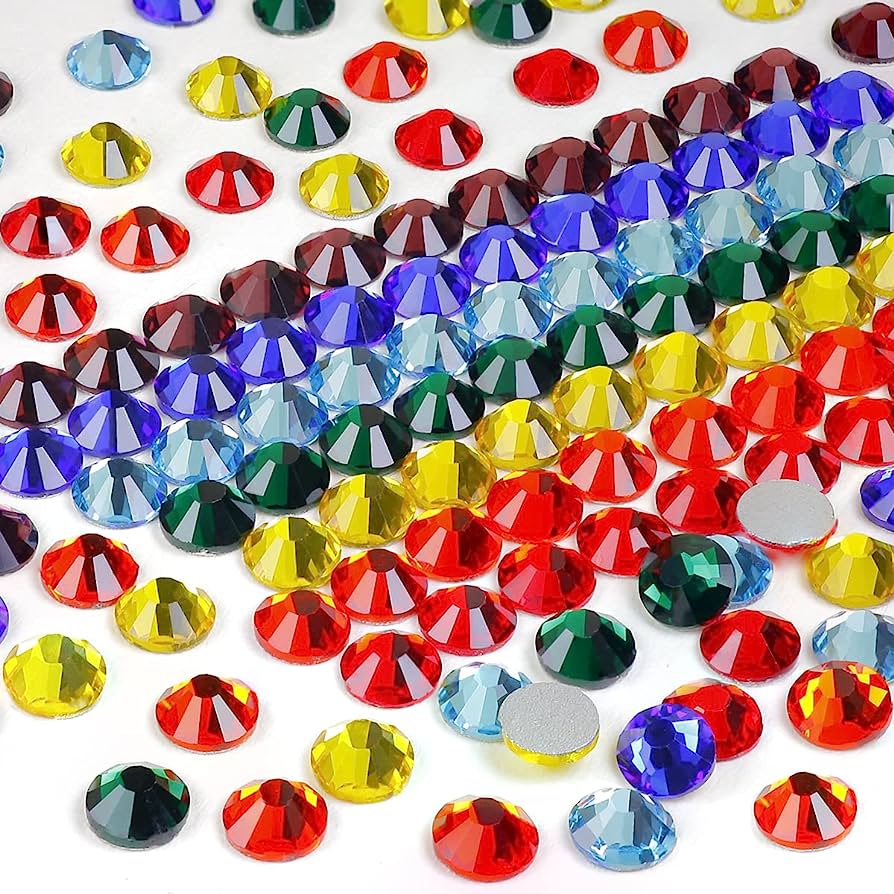
5 Ways to Identify Quality Rhinestones
It can be overwhelming to identify quality rhinestones. On the market, they all tend to look alike with sparkling and dazzling touches. But not all rhinestones are of high quality. Knowing how to judge rhinestone quality is crucial to ensure you’re purchasing top quality.
We’ll discuss five proven ways to identify quality rhinestones to help you get the best value for your money. Let’s examine some of these methods.
1.Brilliance
High-quality rhinestones are characterised by their impeccable brilliance, clarity, and translucency. As a result, when light travels through it, there should be a strong reflection that results in a shimmering dazzle.
Generally, their brilliance and clarity result from the absorbance of acrylic materials. Therefore, you can observe the reflection and determine if the rhinestone is of great quality. Rhinestones with a dull or foggy reflection, on the other hand, signify low quality, impure raw materials, or average manufacturing techniques.
2.Cuts
One of the most important methods to assess the quality of rhinestones is by looking at their precisely angled cuts and facets. A well-cut rhinestone will produce high light refraction and reflection, visible from its appearance. The better the cutting, the more reflection and sparkle.
There are three basic ways of cutting rhinestones:
- Machine cut: Machine-cut rhinestones are precisely crafted using electronically managed machinery. This produces a uniform result with maximum reflection and clarity.
- Hand-cut: These rhinestones are precisely shaped by skilled technicians, resulting in more intricate designs and sparkles but with a different appearance to machine cut.
- Fire polished: The stones are polished by fire or vibration, producing exceptional shimmer.
High-quality rhinestones should be uniformly cut, defined by detailed, rare patterns, and devoid of flaws.
3.Production Materials and Coating
The production materials and coating play a significant role in influencing the durability and quality of rhinestones. Rhinestones are typically made of glass, crystal, or plastic.
- Glass rhinestones: Glass rhinestones are made of high-quality material and are more affordable. However, they lack durability and clarity compared to crystal rhinestones. You can buy your glass flatback rhinestones from Bluestreak Crystals and choose from various brands, including Swarovski, Estella, Serenity, or Preciosa.
- Crystal rhinestones: These are considered the cream of the crop due to their detail-oriented cutting process and a remarkable degree of light refraction, such as the Swarovski crystals.
- Plastic rhinestones: Usually made from resin or acrylic, they offer less brilliance than glass or crystal-produced rhinestones.
Additionally, high-quality rhinestones are distinguished by outstanding coatings like Aurora Borealis (AB), Comet Argent Light (CAL), Aurum, and Heliotrope that effectively alter the base hue and improve colour play.
4.Settings
Settings are another crucial factor to consider when judging the quality of rhinestones. High-quality rhinestones are often designed with excellent craftsmanship, using durable and secure settings that guarantee longevity. Some of the common settings sued in rhinestone jewellery include:
- Channel settings: The rhinestones in this setting are placed in a metal channel. It is often used in bracelets and broad bands.
- Prong or claw setting: The classic prong or claw setting is probably the most common setting. It involves using metal prong or claw settings to hold the rhinestone in place, allowing for ample light exposure. It’s commonly used in necklaces, rings, and earrings.
- Bezel settings: The rhinestone jewellery is totally surrounded by a smooth or rough metal rim in bezel settings, securing the stone. It’s mostly used in rings and necklaces.
- Tension setting: Without prongs or any other type of support, the stone is simply steadied by the pressure of the metal settings. The rhinestone appears to be hovering in the air in an incredible illusion.
- Crown setting: The crown setting, as you might have guessed, features a metal crown that completely encircles the stone in the shape of a crown. This setting has a classic aesthetic appeal that is often used in rings.
In identifying quality settings, pay attention to the base material’s quality, the prong and claw settings, and whether the rhinestone is securely attached.
5.Brand Reputation
Rhinestone quality can be greatly influenced and determined by a brand’s reputation. Compared to unnamed manufacturers, global, reputable businesses like Swarovski, Preciosa, and Estella are more likely to offer rhinestones of the finest quality.
Therefore, you should research, seek advice, and read up on customer reviews before you purchase any stone.
Conclusion
Identifying quality rhinestones requires great knowledge about the factors that guarantee their longevity and clarity. In addition, picking the right stone requires patience and keen attention to detail. By paying attention to the brand reputation, settings, production materials, and cuts, you’re bound to purchase rhinestones of the finest quality.



